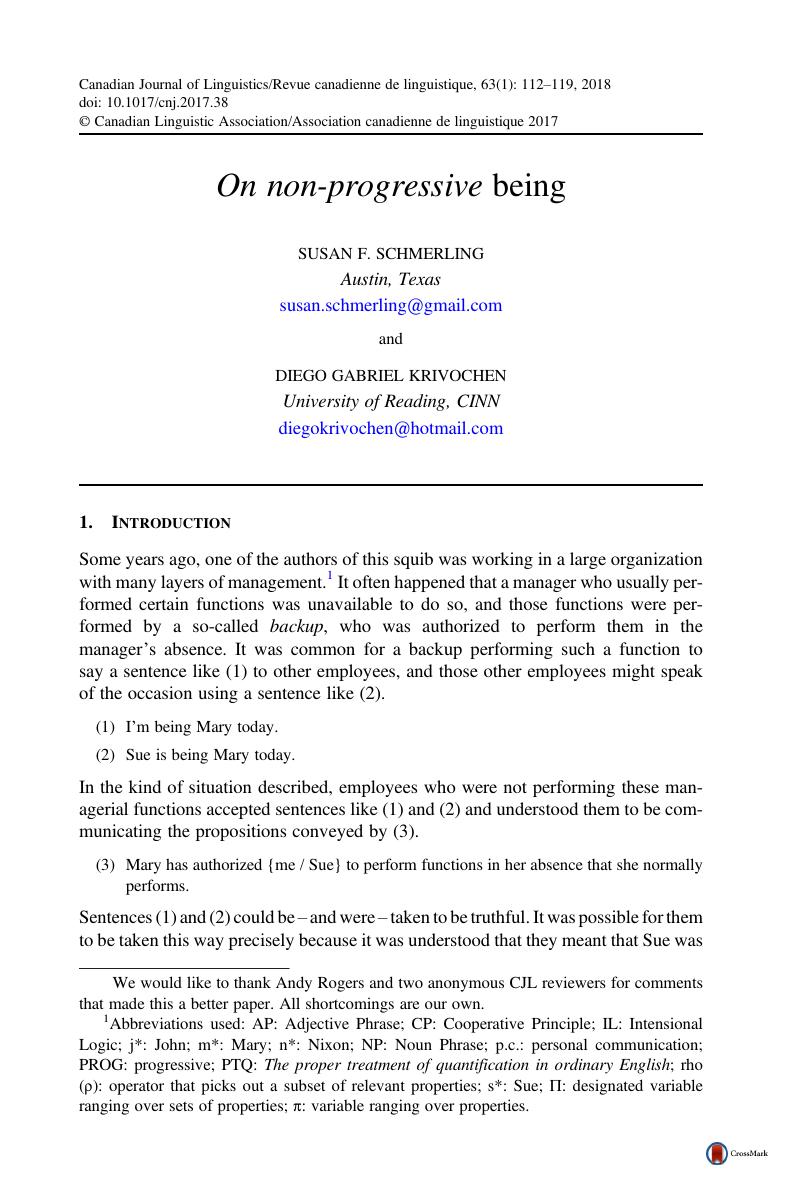No CrossRef data available.
Article contents
On non-progressive being
Published online by Cambridge University Press: 11 July 2017
Abstract

- Type
- Squibs/Notules
- Information
- Canadian Journal of Linguistics/Revue canadienne de linguistique , Volume 63 , Issue 1 , March 2018 , pp. 112 - 119
- Copyright
- © Canadian Linguistic Association/Association canadienne de linguistique 2017
Footnotes
We would like to thank Andy Rogers and two anonymous CJL reviewers for comments that made this a better paper. All shortcomings are our own.




